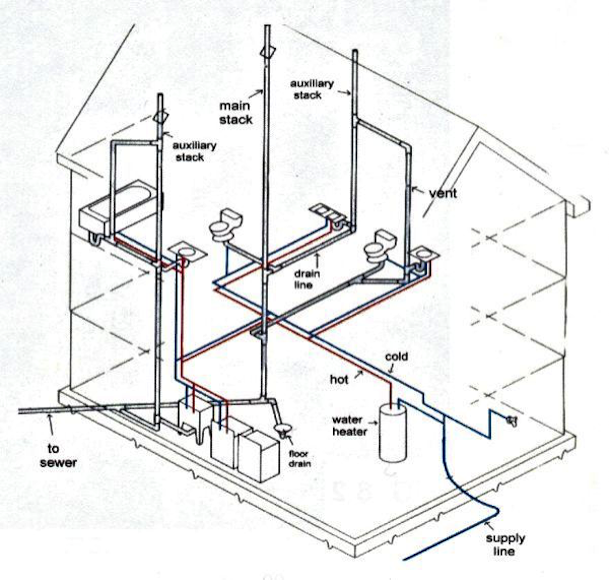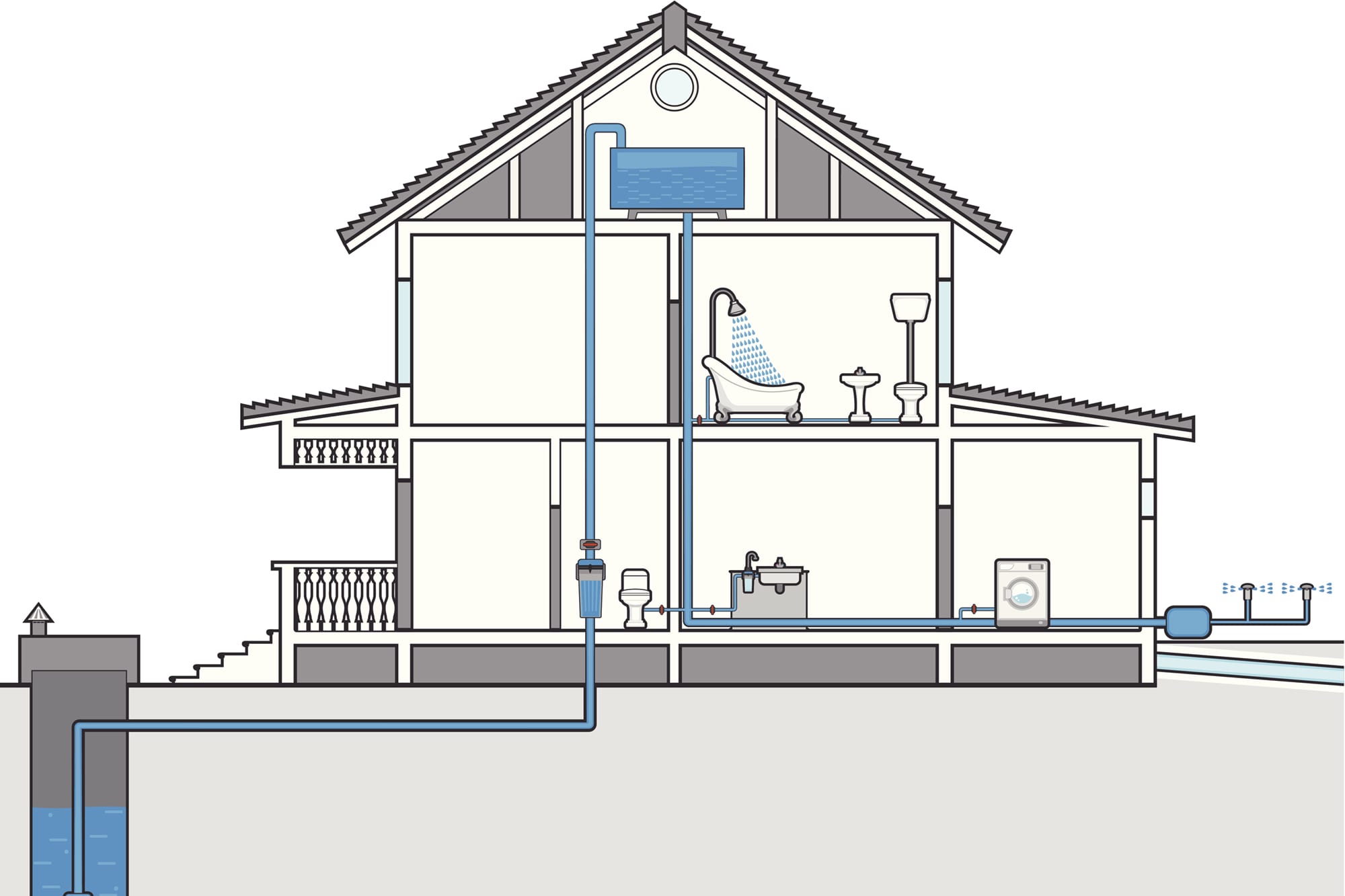The Main Elements of Your Home's Plumbing System
The Main Elements of Your Home's Plumbing System
Blog Article
This post directly below on the subject of The Inner Workings of Your Home's Plumbing is highly attention-grabbing. You should give it a look.

Comprehending exactly how your home's pipes system works is important for each homeowner. From delivering tidy water for alcohol consumption, cooking, and showering to securely removing wastewater, a well-kept pipes system is crucial for your family's health and wellness and convenience. In this thorough overview, we'll explore the elaborate network that comprises your home's pipes and deal tips on upkeep, upgrades, and handling usual issues.
Introduction
Your home's plumbing system is greater than simply a network of pipelines; it's a complex system that ensures you have access to clean water and effective wastewater elimination. Recognizing its components and how they work together can help you prevent expensive repair services and make sure every little thing runs efficiently.
Basic Components of a Plumbing System
Pipes and Tubing
At the heart of your plumbing system are the pipes and tubing that bring water throughout your home. These can be made from numerous products such as copper, PVC, or PEX, each with its benefits in regards to durability and cost-effectiveness.
Fixtures: Sinks, Toilets, Showers, etc.
Fixtures like sinks, toilets, showers, and bathtubs are where water is used in your home. Understanding how these fixtures connect to the plumbing system helps in diagnosing problems and planning upgrades.
Shutoffs and Shut-off Points
Valves regulate the circulation of water in your plumbing system. Shut-off shutoffs are critical throughout emergencies or when you require to make repair services, enabling you to isolate parts of the system without interfering with water circulation to the entire residence.
Water System System
Main Water Line
The main water line attaches your home to the local water supply or an exclusive well. It's where water enters your home and is dispersed to various components.
Water Meter and Pressure Regulator
The water meter procedures your water usage, while a stress regulatory authority ensures that water moves at a risk-free pressure throughout your home's plumbing system, protecting against damage to pipelines and components.
Cold Water vs. Hot Water Lines
Recognizing the distinction in between cold water lines, which supply water straight from the primary, and warm water lines, which bring heated water from the hot water heater, helps in repairing and planning for upgrades.
Drain System
Drain Piping and Traps
Drain pipelines carry wastewater far from sinks, showers, and commodes to the drain or septic tank. Traps protect against drain gases from entering your home and also catch particles that could create blockages.
Ventilation Pipelines
Ventilation pipes permit air into the water drainage system, avoiding suction that can slow down drainage and trigger catches to empty. Appropriate air flow is important for keeping the integrity of your pipes system.
Value of Correct Drain
Making certain correct drainage stops back-ups and water damage. On a regular basis cleaning drains and keeping traps can avoid pricey repairs and extend the life of your pipes system.
Water Heating System
Types of Hot Water Heater
Hot water heater can be tankless or traditional tank-style. Tankless heating units warmth water as needed, while tanks keep warmed water for prompt use.
How Water Heaters Link to the Pipes System
Recognizing how water heaters link to both the cold water supply and warm water circulation lines helps in diagnosing problems like inadequate warm water or leakages.
Maintenance Tips for Water Heaters
Routinely purging your hot water heater to get rid of debris, checking the temperature settings, and examining for leaks can prolong its life expectancy and enhance power performance.
Usual Pipes Concerns
Leaks and Their Causes
Leaks can occur due to aging pipes, loose fittings, or high water pressure. Dealing with leaks immediately stops water damages and mold and mildew development.
Blockages and Clogs
Obstructions in drains pipes and commodes are commonly brought on by purging non-flushable things or a build-up of oil and hair. Making use of drainpipe displays and being mindful of what goes down your drains pipes can protect against obstructions.
Indicators of Pipes Issues to Look For
Low water pressure, slow drains, foul odors, or unusually high water bills are indicators of possible pipes issues that must be dealt with quickly.
Plumbing Maintenance Tips
Normal Examinations and Checks
Schedule annual pipes examinations to capture problems early. Search for signs of leaks, deterioration, or mineral build-up in faucets and showerheads.
DIY Maintenance Tasks
Straightforward jobs like cleaning faucet aerators, checking for toilet leakages making use of dye tablet computers, or protecting exposed pipelines in cool climates can avoid significant pipes problems.
When to Call a Professional Plumber
Know when a pipes problem requires specialist competence. Attempting intricate repair work without proper expertise can cause more damages and higher repair prices.
Upgrading Your Pipes System
Reasons for Upgrading
Updating to water-efficient fixtures or changing old pipes can improve water top quality, decrease water costs, and raise the worth of your home.
Modern Plumbing Technologies and Their Advantages
Check out technologies like wise leak detectors, water-saving commodes, and energy-efficient water heaters that can conserve cash and decrease ecological effect.
Cost Factors To Consider and ROI
Calculate the in advance costs versus lasting savings when taking into consideration pipes upgrades. Numerous upgrades spend for themselves with lowered utility costs and fewer fixings.
Environmental Influence and Conservation
Water-Saving Components and Appliances
Setting up low-flow taps, showerheads, and toilets can dramatically lower water usage without giving up performance.
Tips for Minimizing Water Use
Simple routines like dealing with leaks immediately, taking shorter showers, and running full lots of laundry and meals can preserve water and lower your utility costs.
Eco-Friendly Pipes Options
Take into consideration sustainable pipes products like bamboo for flooring, which is durable and environment-friendly, or recycled glass for counter tops.
Emergency situation Preparedness
Steps to Take Throughout a Plumbing Emergency
Know where your shut-off shutoffs lie and how to shut off the water system in case of a ruptured pipe or major leakage.
Relevance of Having Emergency Contacts Useful
Keep call details for local plumbers or emergency situation services readily available for fast feedback throughout a plumbing crisis.
DIY Emergency Situation Fixes (When Suitable).
Short-lived fixes like using duct tape to patch a dripping pipe or placing a bucket under a leaking tap can minimize damage until an expert plumbing technician shows up.
Verdict.
Recognizing the makeup of your home's pipes system encourages you to maintain it effectively, saving time and money on repairs. By following regular maintenance routines and staying informed about modern plumbing technologies, you can ensure your plumbing system runs successfully for several years ahead.
Exploring Your Homes Plumbing Anatomy
Water Supply System
Main Water Line: This is where water enters your home from the municipal supply or a private well.
Water Meter: Typically located near where the main water line enters the property, it measures the amount of water used.
Shutoff Valve: It s crucial to know where this is in case of emergencies. It allows you to turn off the water supply to the entire house.
Pipes and Fittings: These distribute water throughout your home. Materials can include copper, PVC, or PEX.
Drain-Waste-Vent (DWV) System
Drains: Located in sinks, showers, and tubs, these carry wastewater away.
Traps: U-shaped pipes under sinks that hold standing water, blocking sewer gases from entering the home.
Vents: Pipes that lead from the DWV system to the outside, preventing vacuum formation and allowing gases to escape.
Sewer Line: Carries all wastewater from the home to the municipal sewer system or a septic tank.
Fixtures and Appliances
Sinks, Toilets, and Showers
Dishwashers and Washing Machines
Water Heaters
Maintenance Tips
Regularly check for leaks in exposed pipes and around fixtures.
Inspect the water heater annually for signs of wear.
Clean drains and traps to prevent clogs and odors.
Know how to shut off water to individual fixtures.
When to Call a Professional
Major leaks or burst pipes
Installation of new pipes or fixtures
Septic tank issues
Remodeling projects that involve plumbing changes
Conclusion
Understanding the anatomy of your home's plumbing is key to maintaining a functional and efficient system. Regular checks and knowing when to call in the experts can save you time, money, and stress.
https://www.mavyn.com/blog/exploring-your-homes-plumbing-anatomy

Exploring Your Homes Plumbing Anatomy
Water Supply System
Drain-Waste-Vent (DWV) System
Fixtures and Appliances
Maintenance Tips
When to Call a Professional
Conclusion
Understanding the anatomy of your home's plumbing is key to maintaining a functional and efficient system. Regular checks and knowing when to call in the experts can save you time, money, and stress.
https://www.mavyn.com/blog/exploring-your-homes-plumbing-anatomy
I have been very interested in and I am assuming you enjoyed the entire page. Loved our post? Please share it. Help other people locate it. I appreciate reading our article about Plumbing Installation 101: All You Need to Know.
Schedule Today Report this page